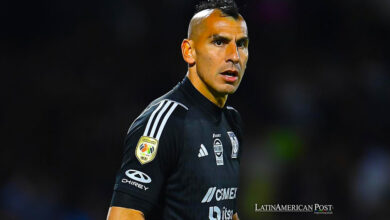New monetary reconversion in Venezuela?
The bolivar stops being strong to become sovereign

Leer en español: Nueva reconversión monetaria en Venezuela
During the last years, the Venezuelan government has applied different strategies to counteract hyperinflation, without achieving positive results and, on the contrary, making the situation more serious.
According to economist and director of Econanalítica, Asdrubal Oliveros, inflation is around 2% daily. The cumulative inflation for the month of January was 84.2%, and the annualized inflation rate between January 2017 and January 2018 was 4,068%.
In addition, cash has not kept pace with inflation; therefore, there is not enough money in circulation. As a result, after the arrival of the new banknotes in 2017, a new illegal business emerged: the sale of cash. It is sold at 50, 80, or even up to 150%. Consequently, this new business generated that in Venezuela everything has two prices: the price in cash and the price with card or transfer.
The new measure
Through a national chain, the executive announced the latest strategy to guarantee Venezuelans commercial and monetary activities: The sovereign bolivar. This measure aims to combat the voracious inflation that according to President Nicolás Maduro has not been the result of wrong economic policies but of the "economic war" that he attributes to other governments.
This monetary reconversion is presented in the framework of an election in which one of the main electoral rivals of Maduro, Henri Falcón, advocates the adoption of the dollar as an economic measure to end what has been called the highest inflation in the world.
The measure consists of:
1. Change the name of the currency. The Bolivar Fuerte will give way to the Sovereign Bolivar.
2. Remove three zeros from the coin.
3. The printing of a new monetary cone. 8 types of bills and two coins. The bills will have the denominations of: Bs.2, Bs. 5, Bs. 10, Bs. 20, Bs. 50, Bs. 100, Bs. 200, Bs. 500, and the coins: 50 cents and 1 bolívar.
Venezuelans will have three months to get used to this new reconversion; although at least in colloquial language, this measure was already being used for some months, due to the extension of the figures.
"I have made the decision to sign, announce and activate a necessary monetary reconversion for the Venezuelan economy. I have decided to reduce three zeros to the currency and take out of circulation the current monetary cone and put IGNORE INTO circulation a new monetary cone with three zeros less", said the head of state from the National Council of Productive Economy that takes place in the Ayacucho Hall from the Miraflores Palace.
Expectations
The Venezuelans soon shared their opinion through the social network Twitter, with the hashtag: # ReconversionMonetaria, to express how this new measure generates confusion, distrust, and more instability in the country, since it arrives without the backing of a plan anti-inflation or stabilization.
In addition, they accuse the measure of being unrealistic in the face of current inflation. The ticket of greater denomination of the new monetary cone is the one of Bs. 500, that in strong bolivares, the present currency, they are 500,000, and they do not reach to buy two liters of milk.
Strategies previously applied
This will be the second reconversion of the currency in 10 years. In 2008, President Hugo Chavez made the change of the monetary cone and put IGNORE INTO circulation the Bolívar Fuerte, with the purpose of "recovering its value in comparison with other currencies such as the dollar and the euro".
On December 4, 2016, the executive announced the printing and circulation of six notes: Bs. 500, Bs. 1,000, Bs. 2,000, Bs. 5,000, Bs. 10,000 and Bs. 20,000.
On December 11, the 100 Bs bill was ordered out of circulation, with the aim of ending what Maduro called "the extraction of Venezuelan money by the Colombian mafias". For that moment, paper money represented 34% of the pieces of the circulating monetary cone and having to get rid of it in 72 hours, as announced by the measure, generated despair and chaos, and resulted in protests and looting in several regions of the country. . On December 18, the first extension to this measure was announced, which still remains.
One year later, in 2017, the Bs. 100,000 bill, the seventh and last "of the new ones", went IGNORE INTO circulation to complete the process of expanding the monetary cone. This month, a new watermark was added as a security element to the latter and its circulation was scheduled for last Wednesday, March 14. This piece would coexist with the one that was already circulating today.
Before the new measure, all this paper money, including that put IGNORE INTO circulation a week ago, will lose validity from June 4.
Latin American Post | Camila González C.
Translated from " Nueva reconversión monetaria en Venezuela"





